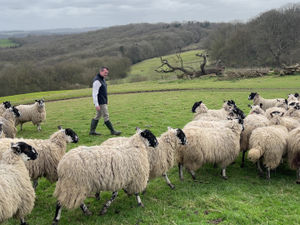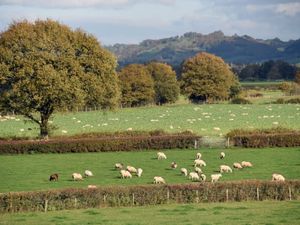Shropshire Farming Talk: Prioritise herd health with five top tips
The British dairy industry prides itself on being a world leader and pioneer in terms of cattle welfare.

The health and welfare of all animals in the dairy herd is paramount for profitable and efficient milk production.
Ensuring that cows are happy and healthy will improve fertility, yield, longevity and disease resistance as well as reducing costs – such as vet bills, medicines and labour.
There are also increasing pressures and regulations to ensure the already high standards that exist in the UK are maintained and increased.
The Cattle Information Service (CIS) offers a range of services to help dairy farmers when it comes to optimising cattle welfare.
Milk recording enables farmers to monitor the somatic cell count (SCC). This is highly valuable to dairy producers both because counts that are too high can lead to poor quality or even unsaleable milk and SCC can be used to monitor mastitis incidence in the herd.
In addition, SCC is frequently used to determine quality payments to dairy producers.
Controlling mastitis will reduce somatic cell counts and here are five management tips.
1. Ensure cows and environment are clean – a dirty environment will lead to a build-up of bacteria.
2. Removal of udder hair from the cow reduces the build-up of dirt, water and bacteria.
3. A cow’s immune function is at its lowest around the time of calving so clean calving pens are essential.
4. Maintain a clean parlour – dirty pulsators and vacuum controllers can malfunction and cause teat-end damage which will lead to the spread of infection.
5. Personnel – those working closely with livestock may also be contaminators of bacteria that could lead to mastitis. Encouraging milkers to wear gloves is good hygiene practice.
Disease testing is another method for upholding welfare standards, and is crucial to farm management decisions.
Many milk buyers now require their producers to develop an active Health Management Plan with their farm vet to determine the best testing plan.
Health testing will screen milk, tissue or blood samples for key diseases such as Johne’s, BVD Ab, BVD Ag, IBR Ab, IBR gE Ab, Lepto, Neospora and Liver Fluke.
In terms of testing BVD Ag has to be a separate PCR sample as this is for vaccinated cows BVD Ab is unvaccinated. IBR gE Ab is for vaccinated animals IBR ab is for unvaccinated.
One bulk tank milk sample can be tested for BVD Ab, IBR Ab, IBR gE Ab, Neospora, Lepto and Liver fluke. Johnes is on individual animals not on the bulk tank milk sample.
Another useful test is milk urea analysis to assist feed management and protein intercept comparing production with protein levels to gauge energy status.
For information on health testing services visit thecis.co.uk/services/HealthTesting
By Amanda Wilkes, CIS Area Manager for Shropshire





